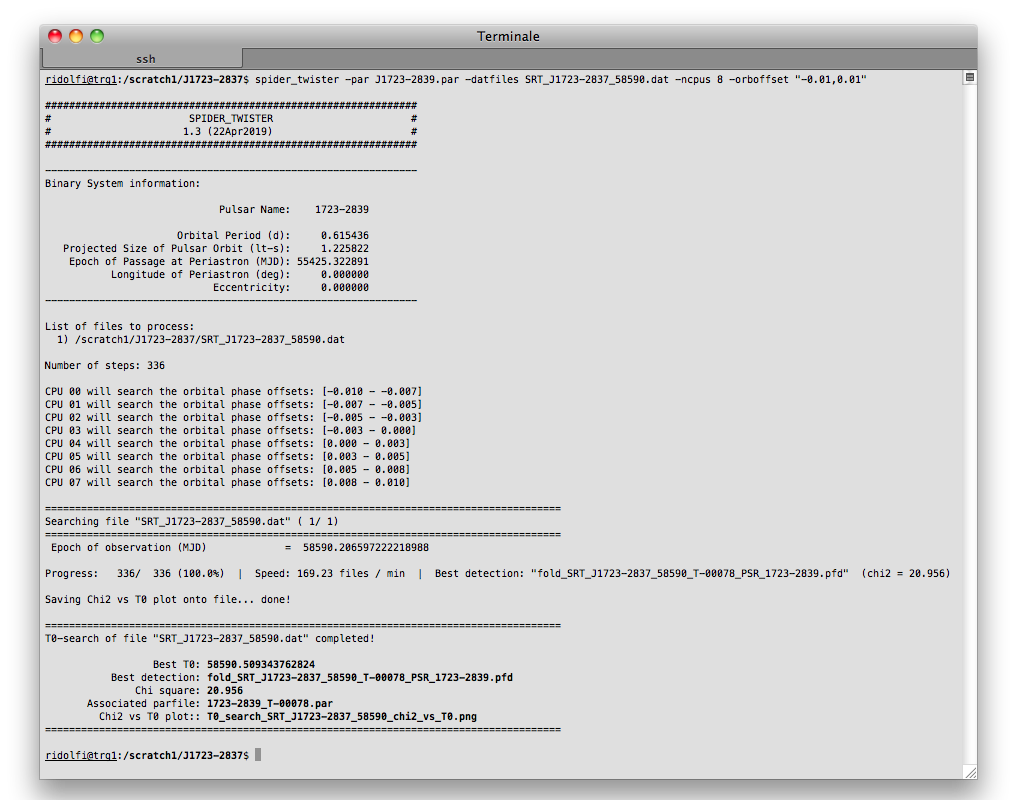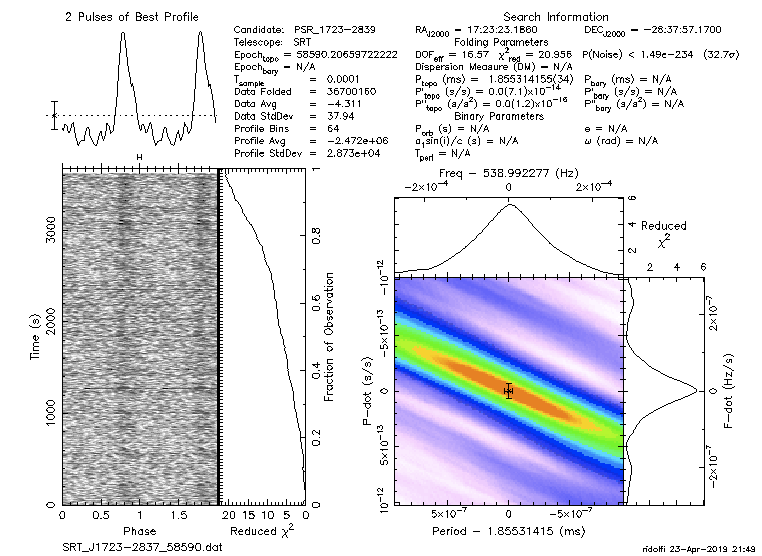
SPIDER_TWISTER on GitHub
Latest version: 1.6 (12Oct2020)
|

SPIDER_TWISTER on GitHub
Latest version: 1.6 (12Oct2020)
|
|
SPIDER_TWISTER
Requirements: |
SPIDER_TWISTER helps you recover the signal of black widow / redback pulsars by doing a search in orbital phase.
"Black widow" and "Redback" binary pulsars (also called "spiders") are known to often show a strong orbital variability, with their orbital period changing in a quasi-random fashion over long time scales. For this reason, an old ephemeris is often not able to fold newer data of the same pulsar, because the orbital model cannot correctly predict the exact orbital phase at a later time. SPIDER_TWISTER performs a search in orbital phase, by automatically folding the data using several trial values for the time of passage at the ascending node ($T_{\rm asc}$) and returning the value that corresponds to the highest-S/N. In this way, recovering the signal of "spiders" is super easy!
|
Play the video below for a DEMO!
|
|
1) Installation No actual installation procedure is needed to use SPIDER_TWISTER itself. However, since it calls some PRESTO routine, you first need to have PRESTO installed. To install PRESTO, you can follow this pulsar software installation guide.
Once PRESTO is installed and correctly working, you can get started with SPIDER_TWISTER:
Obviously, to have SPIDER_TWISTER at hand from any directory, you can add the folder where the code is located to your PATH environment variable.
To successfully use SPIDER_TWISTER, you need:
Assuming to have a dedispersed time series called "SRT_J1723-2837_58590.dat" and a corresponding best available ephemeris called "J1723-2839.par", you can run SPIDER_TWISTER by simply typing:
spider_twister -par J1723-2839.par -dat SRT_J1723-2837_58590.dat -ncpus 8 -orboffset "-0.01,0.01"

Besides giving you the best $T_0$ trial, the code outputs a plot of the detection significance (Chi-Square) as a function of orbital phase offset, as well as the prepfold diagnostic plot of the best detection. 

3) Command line options You can use a number of options to adapt SPIDER_TWISTER to specific applications and cases. Here follows a list of all the available options:
4) Acknowledgements
Big thanks to Jason Wu, Arianna Miraval Zanon, Tasha Gautam and Laila Vleeschower Calas for using the code, reporting bugs, and suggesting improvements.
SPIDER_TWISTER, mostly in its early stage of development, has been used to redetect several black widows and redbacks, in many cases of which this led to the obtainment of phase connected timing solutions. Here follow the list of articles for which the code has been used:
|